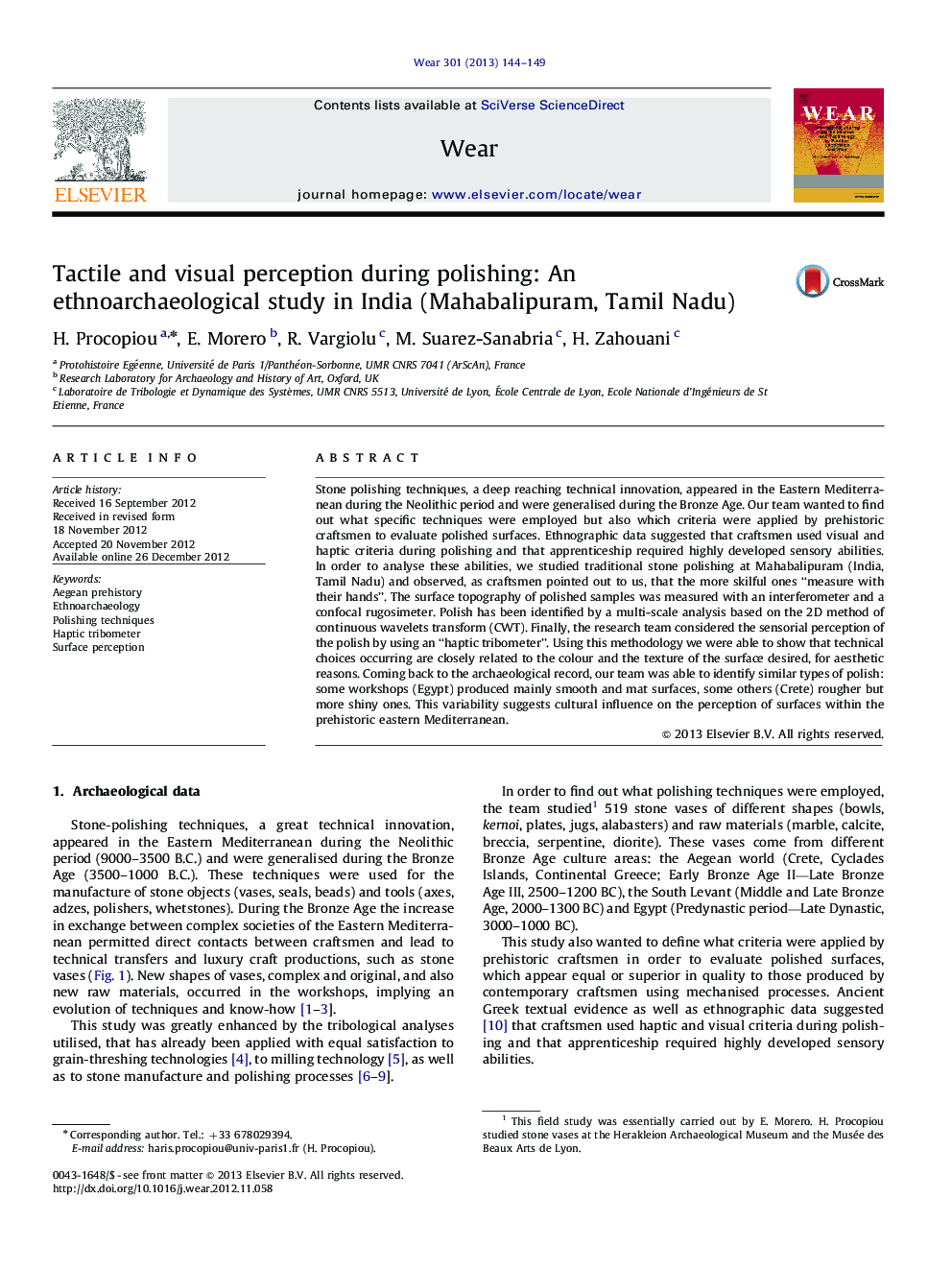| کد مقاله | کد نشریه | سال انتشار | مقاله انگلیسی | نسخه تمام متن |
|---|---|---|---|---|
| 617514 | 1455001 | 2013 | 6 صفحه PDF | دانلود رایگان |

Stone polishing techniques, a deep reaching technical innovation, appeared in the Eastern Mediterranean during the Neolithic period and were generalised during the Bronze Age. Our team wanted to find out what specific techniques were employed but also which criteria were applied by prehistoric craftsmen to evaluate polished surfaces. Ethnographic data suggested that craftsmen used visual and haptic criteria during polishing and that apprenticeship required highly developed sensory abilities. In order to analyse these abilities, we studied traditional stone polishing at Mahabalipuram (India, Tamil Nadu) and observed, as craftsmen pointed out to us, that the more skilful ones “measure with their hands”. The surface topography of polished samples was measured with an interferometer and a confocal rugosimeter. Polish has been identified by a multi-scale analysis based on the 2D method of continuous wavelets transform (CWT). Finally, the research team considered the sensorial perception of the polish by using an “haptic tribometer”. Using this methodology we were able to show that technical choices occurring are closely related to the colour and the texture of the surface desired, for aesthetic reasons. Coming back to the archaeological record, our team was able to identify similar types of polish: some workshops (Egypt) produced mainly smooth and mat surfaces, some others (Crete) rougher but more shiny ones. This variability suggests cultural influence on the perception of surfaces within the prehistoric eastern Mediterranean.
Journal: Wear - Volume 301, Issues 1–2, April–May 2013, Pages 144–149